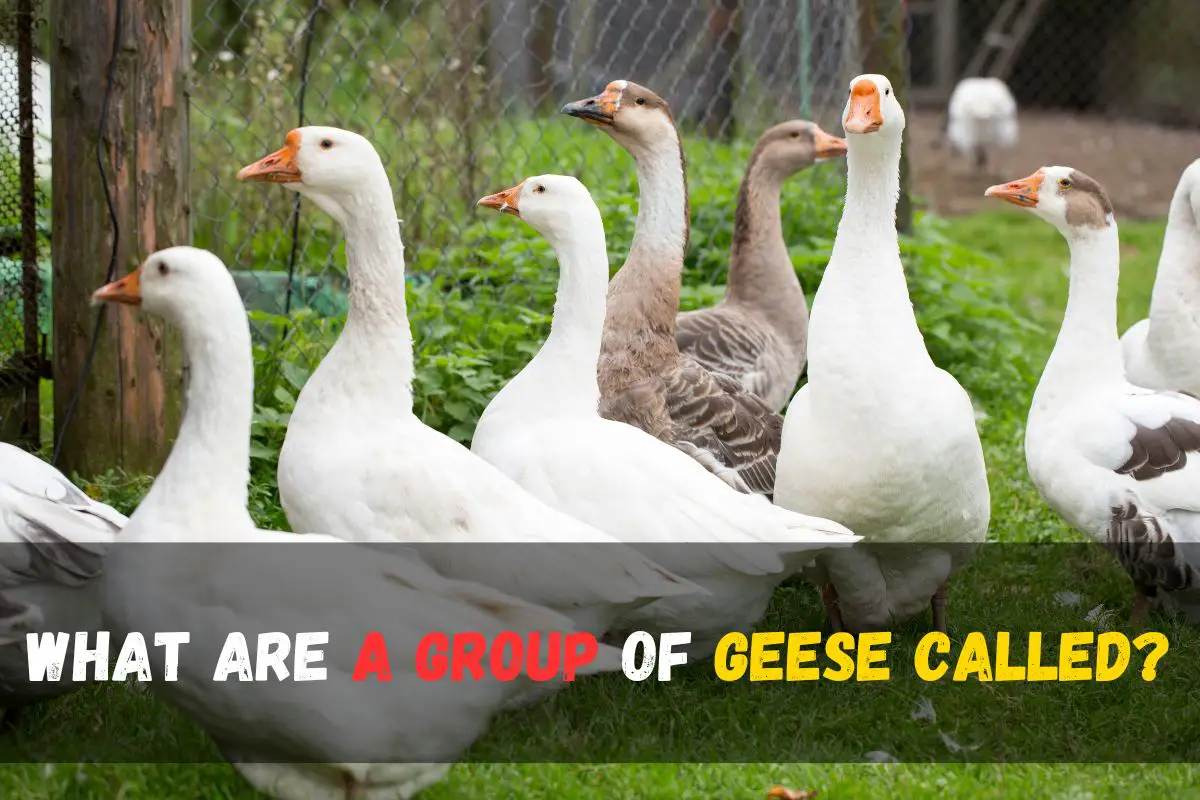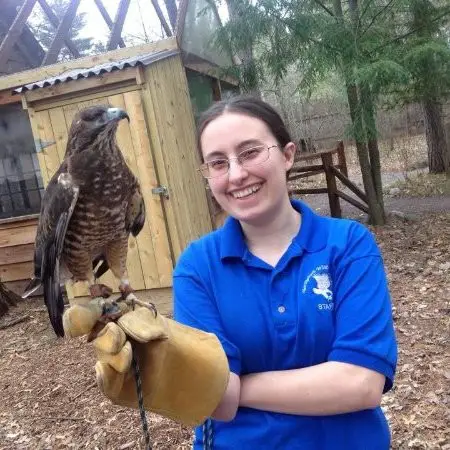What is a group of geese called?
A group of geese, commonly referred to as a “flock of geese,” is a captivating sight in the realm of ornithology. The term “flock” is the collective noun used to describe a congregation of these magnificent waterfowl. Geese belong to the Anatidae family, a broader classification that encompasses ducks and swans. Within the Anatidae family, geese constitute a specific group known as “true geese,” distinguished by their characteristic features and behavior.
Geese are known for their strong familial bonds and their tendency to gather in larger groups, forming these flocks during certain times of the year. The family structure among geese is vital in their life cycle, playing a pivotal role in their migration patterns. True geese are characterized by their larger size in comparison to their smaller counterparts within the waterfowl genera.
What is Group of Quail Called?
The term “genus” is often used in ornithology to classify birds into specific groups based on their shared characteristics and evolutionary history. Within the genera of waterfowl, geese hold a distinct place due to their unique attributes.
Other names for a group of geese
There are various intriguing and sometimes whimsical names used to describe a group of geese, each carrying its unique charm. These collective nouns, or terms of venery, shed light on the rich history and imaginative language associated with groups of these graceful waterfowl. Here are some of the alternative names for a group of geese:
- Bunch: This term reflects the informal and common nature of geese gatherings.
- Chevron: Evoking the image of geese flying in a V-shaped formation, this term beautifully captures their iconic aerial display.
- Christmas: A delightful name that conjures images of geese as part of holiday festivities.
- Cluster: Describes geese when they come together closely, perhaps during feeding or resting.
- Covert: Suggests a concealed or hidden group, highlighting their ability to blend into their surroundings.
- Drove: This term harkens back to the days when geese were herded and driven for various purposes.
- Flight: Perhaps the most widely recognized term, it refers to geese in flight, especially during migration.
- Gagelen: An old and charming term used to describe a group of these waterfowl.
- Herd: Similar to a drove, it implies a group of geese being collectively managed.
- Knob: Suggests a rounded or huddled group of geese, perhaps during rest.
- Knot: Reflects the idea of geese clustered or “knotted” together.
- Lag: Implies a trailing or slower group of geese, often seen in a formation during migration.
- Little knot: A smaller and more intimate gathering of these birds.
- Nide: An archaic term that denotes a group of nesting geese.
- Nye: Another historical term, often used to describe a gathering of geese.
- Plump: A plump suggests a group of well-fed geese, perhaps enjoying a bountiful feast.
- Sord: A term that highlights the collective nature of geese, often used in historical contexts.
- String: This term implies a linear arrangement of geese as if they were strung together.
- Sute: An uncommon and intriguing term that adds to the lexicon of geese group names.
- Trip: Evokes the idea of geese traveling together on a journey.
- A “V” formation of geese: A more modern term, referring to the iconic V-shaped flight formation often seen during migration.
On The Ground What Is A Group Of Geese Called?
A group of geese on the ground is commonly referred to as a “Gaggle of Geese.” This term is a collective noun used to describe a gathering of geese, and it can also be used when they are in the water.
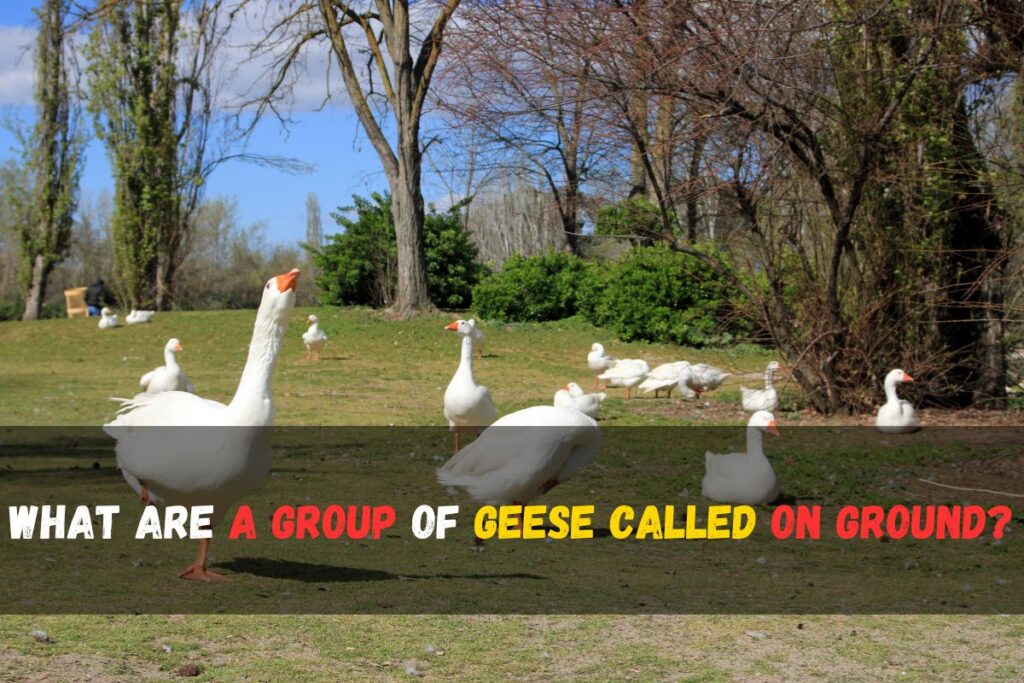
What Is A Group Of Geese In Flying Called?
A group of geese in flight is referred to as a “Wedge,” “Skein,” or “Team,” depending on the collective noun used to describe them. These terms indicate that the geese were spotted while flying in the air.
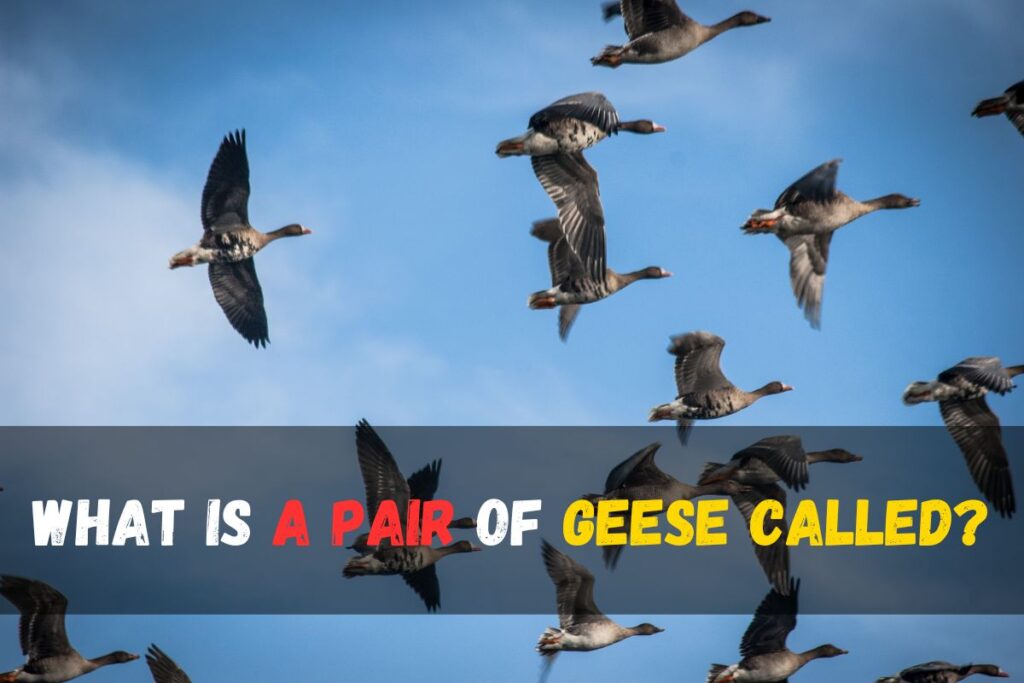
Why is a group of geese flying called a wedge?
A group of geese in flight is called a “wedge” because when geese are flying in a tight ‘V’ formation, their shape closely resembles a wedge. This formation appears similar to a wedge that one might place under a door to keep it open. The geese flying in this distinctive ‘V’ shape create a wedge-like silhouette in the sky, and that’s why they are referred to as a “wedge of geese” when they are in the air.
What is the reason behind referring to a collection of geese as a “gaggle”?
A group of geese is called a “gaggle” because when they gather together on land, they tend to become rather noisy and rowdy. The term “gaggle” is used to describe not only the large group of geese but also their disorderly behavior and the loud noise they produce. So, it is called a “gaggle” due to their tendency to exhibit these characteristics when congregated in large numbers.
How many geese are required for a gaggle?
A group is considered a gaggle when it consists of a minimum of five geese. Therefore, a minimum of five geese is required for a gaggle.
Why do geese fly together in groups?
One primary reason for geese migrating in groups is to conserve energy. Migrating can be an arduous journey, and by flying together, geese can reduce the amount of energy expended during long flights. Flying in formation, with each bird benefiting from the aerodynamic uplift created by the bird in front, allows the group to cover greater distances while expending less energy. This energy-saving strategy is vital for their survival, especially during long migrations between their winter and summer homes.
Geese also place significant emphasis on their family units. Flying in groups helps them stay connected with their family members, as well as ensuring their safety. Geese often travel with their young goslings, and the formation provides a protective shield for their offspring. By flying together, geese can keep a close watch on their family’s well-being.
Location plays a crucial role in the decision to fly together. Geese are intelligent navigators, and their collective effort allows them to pinpoint the most suitable locations for migration and breeding. This behavior isn’t just about staying together for companionship; it’s a strategy that enhances their efficiency in finding appropriate nesting sites and sources of food.
Efficiency is another key factor. Geese flying in an organized manner minimize wind resistance, allowing them to maintain a steady pace even in the face of strong headwinds. This collaborative approach aids in the optimization of their overall journey and enhances their chances of reaching their destination safely and efficiently.
During migration, female geese may be carrying eggs or tending to nests, which makes flying in formation particularly beneficial. The structured formation minimizes the physical strain on individual geese, helping them endure the lengthy journeys with less stress and fatigue. This aspect contributes to their longer lifespan as a species.
Why do geese flock together in large groups?
Geese are known for their remarkable ability to form large flocks, and this behavior holds numerous advantages for these birds. One of the primary reasons geese flock together in large groups is for protection against predators. Safety in numbers is a fundamental strategy, as it significantly reduces the potential threat from predators. When geese are together in groups, they can alert each other more effectively to potential dangers, making it harder for predators to approach unnoticed.
Apart from protection against predators, geese also flock together to enhance their foraging capabilities. When they forage for food, they can cover a larger area more efficiently, increasing their chances of finding ample supplies. This cooperative behavior provides significant benefits for their sustenance, ensuring they have enough resources to thrive.
The advantages of flocking are further multiplied during migration. The Pink-footed goose, a species known for its long migratory journeys, demonstrates this behavior vividly. By forming large congregations, these geese can track potential routes and navigate more effectively. Their collective intelligence allows them to adapt to changing environmental conditions and select the most suitable paths for their migration.
While there are clear advantages to geese flocking together, there are also downsides to this behavior, particularly the noise. The noise generated by a large group of geese can be overwhelming, both for other wildlife and for human populations living in proximity. Nevertheless, this noise serves a purpose as well. It acts as a form of communication, aiding the coordination of the group’s movements and helping them stay connected during their
FAQ’S
What is a pair of geese called?
A pair of geese is not specifically termed, but it is commonly referred to as just “a pair of geese.” However, individually, a male goose is called a “gander,” and a female goose can be referred to as a “dame,” although they are often simply called “geese.”
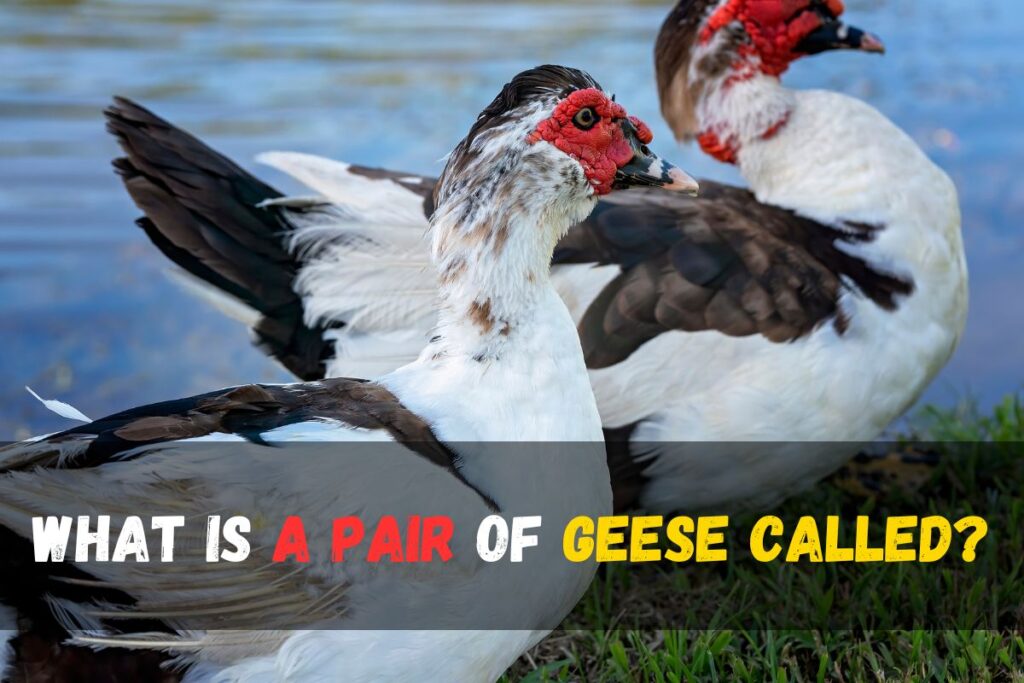
What is the collective term for a gathering of snow geese?
A group of snow geese is commonly referred to as either an “avalanche” or a “blizzard.” These terms describe the collective gatherings of these birds. So, you can call a collection of snow geese by either of these two names.
When Do Geese Leave Groups?
Geese typically leave groups during the breeding season, which is in the spring and early summer. They form breeding pairs and establish territories, leading to a temporary departure from larger flocks. After the breeding season, they often rejoin larger groups during migration or overwintering.
What is a male goose called?
In the enchanting world of waterfowl, the name of a distinguished male goose is none other than “gander.” In contrast, the graceful female counterpart is simply known as a “goose.” When it comes to the adorable offspring of these majestic birds, they go by the endearing name of “goslings.” What makes the lives of geese even more fascinating is their unwavering commitment to love and partnership. Geese are known to mate for life, forming unbreakable bonds. Though in rare instances, when fate takes a somber turn and one partner departs, some geese might embark on a new journey of companionship, proving that even in the avian world, love finds a way to endure.
How is a collection of geese referred to when they are in the water?
A group of geese on the water is called a “plump.” However, it’s a common misconception that when geese gather on the water, they are searching and hunting for fish, which is not correct. Instead, they often dip their heads below the surface to feed on aquatic plants found below the water’s surface.

What is a group of baby geese called?
A group of baby geese is commonly called a “brood of goslings.” Alternatively, it can also be referred to as a “gaggle of goslings” or a “flock of goslings.” You can also use other generic bird terms such as “nestlings” or “fledglings,” but “goslings” is the most common term for a group of baby geese.
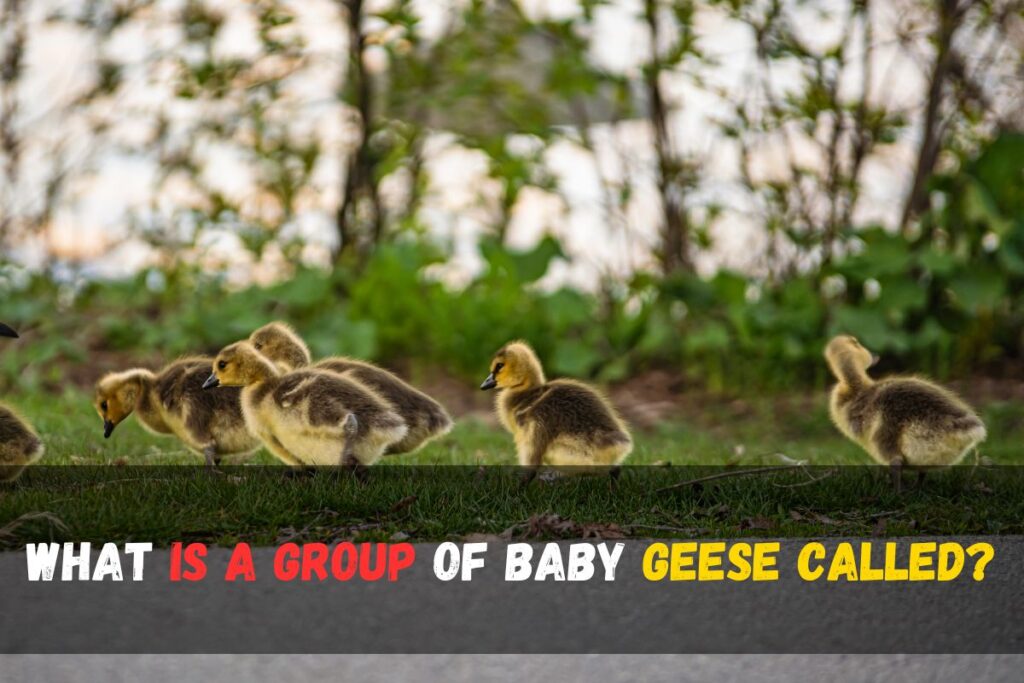
When do geese flock together?
Geese tend to flock together after the breeding season is over. During this time, they become much more social and form large groups in places with abundant food sources. These flocks are maintained for their migration, and the birds will stay together for the entire journey. Although geese are generally okay with being around one another, they may compete through displays and fights, especially in areas where food is less abundant. So, geese flock together after their breeding season when they gather for migration and socialize in larger groups.

